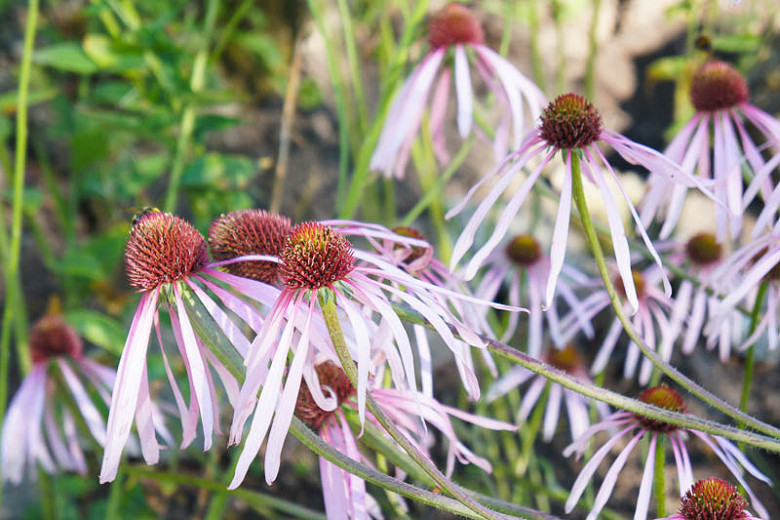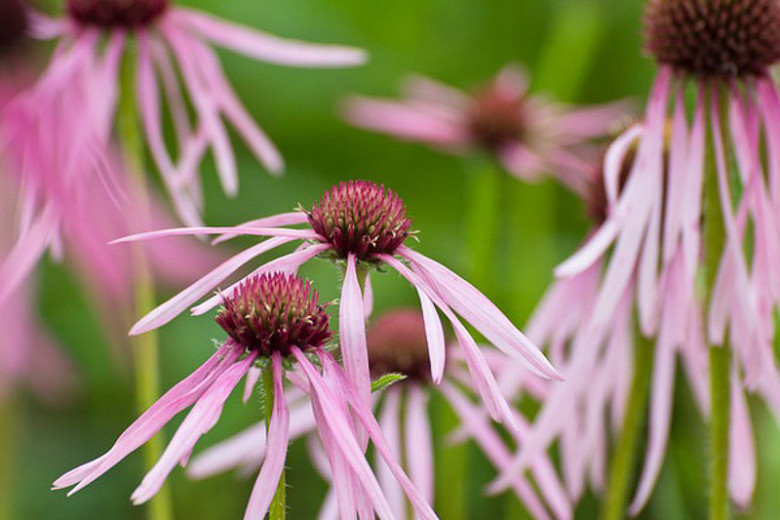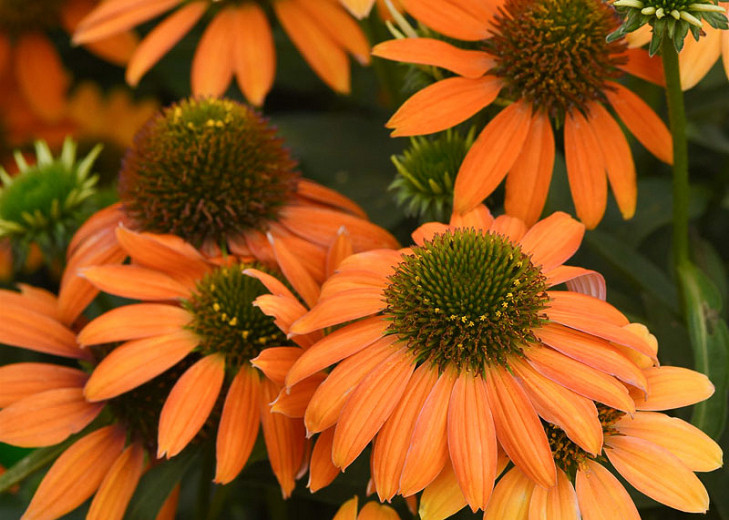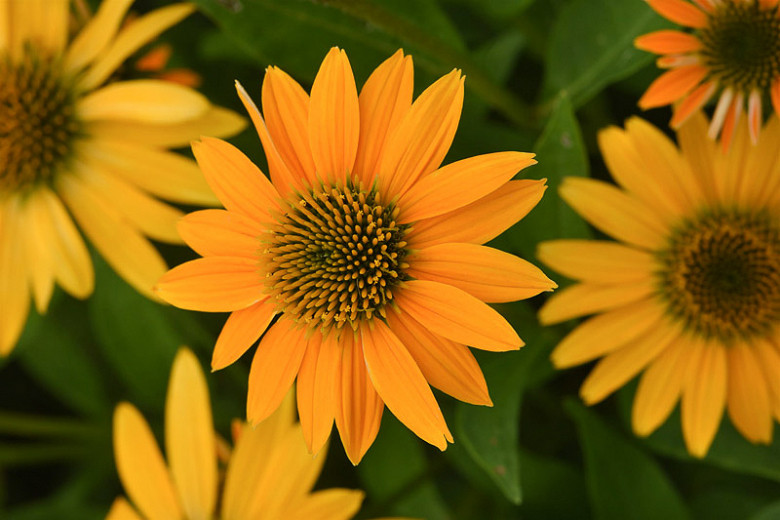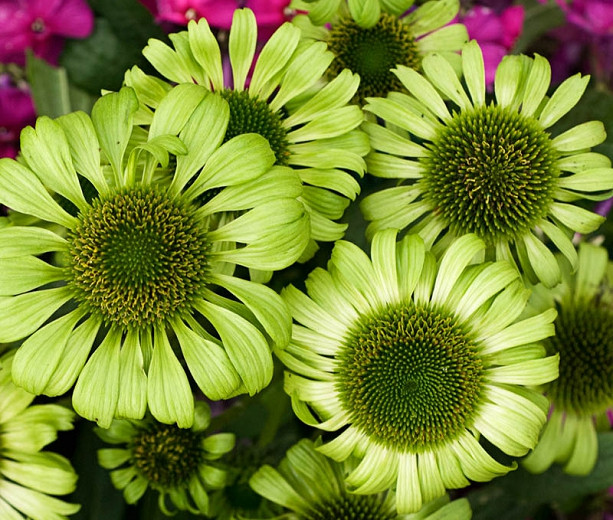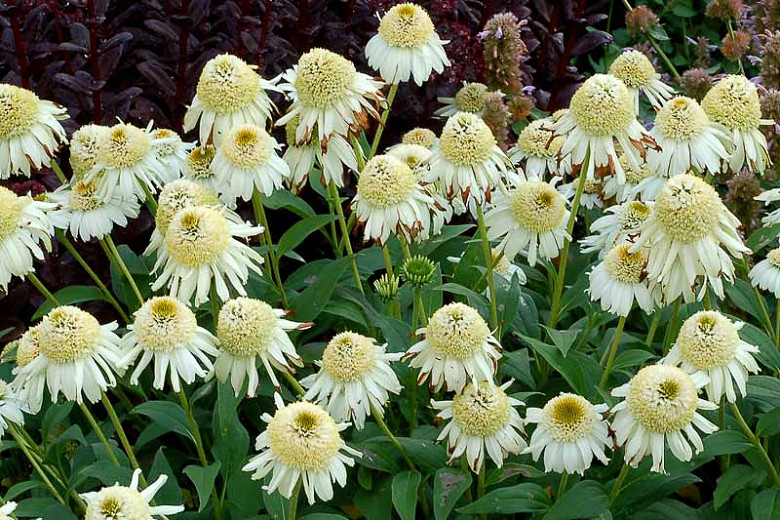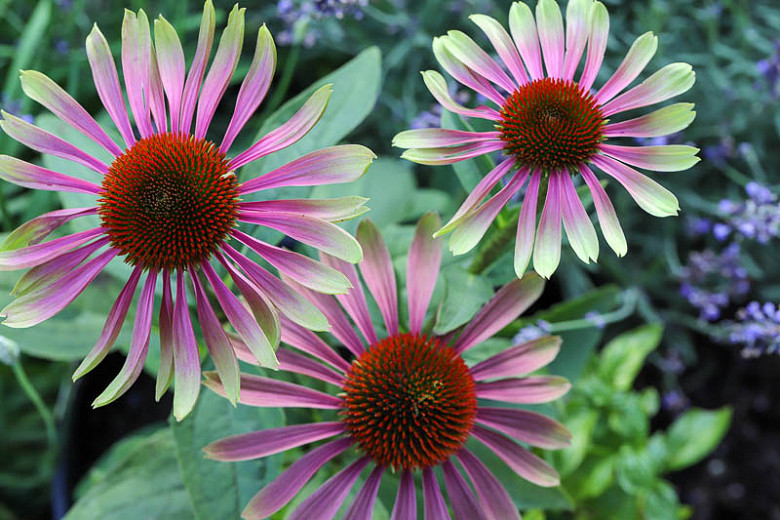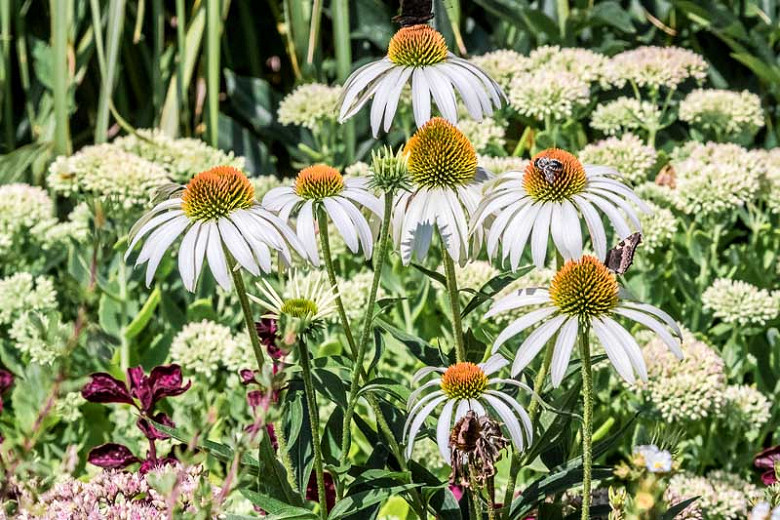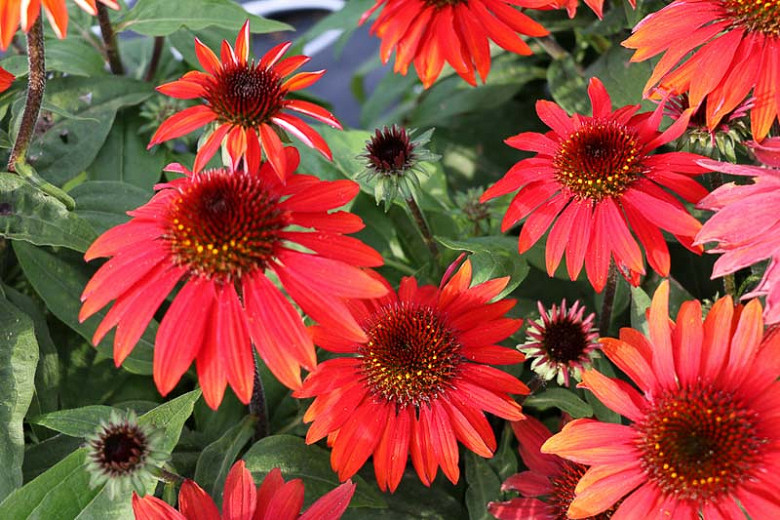Echinacea pallida (Pale Purple Coneflower)
This Echinacea species gets the attention of many gardeners. Why? The lovely combination of the prominent central cone and thin, pale pink to purple flower petals gracefully hanging like tassels, makes them one of the most attractive prairie perennials. Aside from the subtle form and color of its elegant flowers, Echinacea pallida, commonly known as Pale Purple Coneflower also features a dark green foliage of long, slender, toothless leaves.
This Echinacea species gets the attention of many gardeners. Why? The lovely combination of the prominent central cone and thin, pale pink to purple flower petals gracefully hanging like tassels, makes them one of the most attractive prairie perennials. Aside from the subtle form and color of its elegant flowers, Echinacea pallida, commonly known as Pale Purple Coneflower also features a dark green foliage of long, slender, toothless leaves. Blooming from late spring to midsummer, this attractive upright perennial is worthy of a place in pollinator gardens, perennial borders, prairies, or wildflower gardens.
- Grows up to 24-36 in. tall (60-90 cm) and 12-18 in. wide (30-45 cm). Will freely self-seeds if some seed heads are left in place.
- Thrives in full sun in average, dry to medium moisture, well-drained soils. Tolerant to drought, heat, and humidity.
- Perfect choice for beds and borders, prairies and meadows, wildflower gardens, or cottage gardens.
- Excellent as cut flowers. If flower heads are not removed in the fall, the blackened cones will be visited by birds that feed on the seeds.
- No serious pest or disease issues. Attractive to butterflies, hummingbirds, and other pollinators, but deer resistant.
- Cut back stems as the blooms fade which may promote new blooms. Flowers may be kept on the plant for winter interest.
- Propagate by seed, by division in spring or fall, or by root cuttings from late fall to early winter.
- Native to North America, primarily in the southeastern and central US where this Echinacea species grows happily in well-drained prairies and grasslands.
Requirements
| Hardiness | 3 – 10 |
|---|---|
| Heat Zones | 1 – 9 |
| Climate Zones | 1, 1A, 1B, 2, 2A, 2B, 3, 3A, 3B, 4, 5, 6, 7, 8, 9, 10, 11, 12, 13, 14, 15, 16, 17, 18, 19, 20, 21, 22, 23, 24, A2, A3 |
| Plant Type | Perennials |
| Plant Family | Echinacea – Coneflowers |
| Exposure | Full Sun |
| Season of Interest | Spring (Late)Summer (Early,Mid) |
| Height | 2' – 3' (60cm – 90cm) |
| Spread | 1' – 2' (30cm – 60cm) |
| Spacing | 18″ – 24″ (45cm – 60cm) |
| Water Needs | Low, Average |
| Maintenance | Low |
| Soil Type | Chalk, Loam, Sand |
| Soil pH | Acid, Alkaline, Neutral |
| Soil Drainage | Well-Drained |
| Characteristics | Cut Flowers, Showy |
| Native Plants | United States, Midwest, Illinois, Indiana, Iowa, Kansas, Michigan, Missouri, Nebraska, Wisconsin, Northeast, Connecticut, Maine, Massachusetts, New York, Southeast, Alabama, Arkansas, Georgia, Louisiana, North Carolina, South Carolina, Tennessee, Virginia, Southwest, Oklahoma, Texas |
| Tolerance | Clay Soil, Deer, Drought, Dry Soil, Rocky Soil |
| Attracts | Birds, Butterflies |
| Garden Uses | Beds and Borders |
| Garden Styles | Informal and Cottage, Prairie and Meadow |
